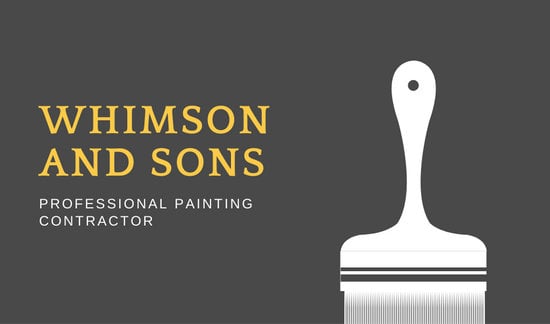Examine The Duty Of Seasonal Factors In The Success Of Commercial Outside Painting And Reveal The Most Effective Times To Protect Enduring Results For Your Project
Examine The Duty Of Seasonal Factors In The Success Of Commercial Outside Painting And Reveal The Most Effective Times To Protect Enduring Results For Your Project
Blog Article
Write-Up Written By-Leach Bagger
When you're preparing an industrial outside painting project, seasonal factors can make or break your results. You'll want to think about how temperature level and humidity influence paint application and drying times. Selecting the best period can ensure your paint sticks correctly and lasts longer. However which seasons are truly the most effective for this sort of job? Let's discover the key elements that can influence your task's success.
The Effect of Temperature on Paint Application
When you're intending a business outside paint project, the temperature level can dramatically influence just how well the paint adheres and dries out.
Preferably, you wish to paint when temperatures vary in between 50 ° F and 85 ° F. If it's too cool, the paint might not cure correctly, bring about issues like peeling off or splitting.
On the other hand, if it's too hot, the paint can dry out as well quickly, protecting against proper attachment and leading to an irregular finish.
You must likewise take into consideration the moment of day; early morning or late afternoon offers cooler temperatures, which can be more beneficial.
Always inspect the supplier's recommendations for the certain paint you're making use of, as they commonly supply advice on the optimal temperature array for ideal results.
Moisture and Its Effect on Drying Times
Temperature isn't the only ecological factor that affects your commercial external painting task; humidity plays a considerable role also. High moisture degrees can reduce drying out times substantially, influencing the general high quality of your paint task.
When the air is saturated with dampness, the paint takes longer to treat, which can result in problems like bad adhesion and a higher threat of mold development. If you're repainting on an especially moist day, be prepared for extended wait times between coats.
It's critical to check neighborhood weather conditions and plan appropriately. Preferably, go for https://edwinzpopi.ageeksblog.com/33884485/determining-a-respectable-painting-company-necessary-qualities-to-consider between 40% and 70% for optimum drying out.
Keeping these factors in mind ensures your job remains on track and delivers a long lasting finish.
Best Seasons for Commercial Exterior Paint Projects
What's the most effective season for your business external paint projects?
Spring and very early autumn are commonly your best bets. During these periods, temperatures are light, and moisture degrees are frequently reduced, developing suitable conditions for paint application and drying.
Prevent summer season's intense heat, which can cause paint to dry as well promptly, resulting in poor bond and coating. Similarly, winter months's cold temperatures can hinder appropriate drying out and healing, running the risk of the durability of your paint work.
Go for days with temperatures between 50 ° F and 85 ° F for optimum results. Bear in mind to examine the neighborhood weather forecast for rain, as wet problems can spoil your task.
https://interior-home-painters-ne22087.blogrelation.com/41326325/a-professional-paint-company-can-significantly-change-the-appearance-of-your-home-s-interior-however-what-various-other-unexpected-benefits-might-you-discover around these aspects guarantees your painting job runs smoothly and lasts much longer.
Final thought
Finally, planning your commercial exterior painting projects around seasonal factors to consider can make a significant difference in the end result. By scheduling work throughout the optimal temperatures and humidity levels, you'll ensure better bond and drying out times. Keep in mind to keep an eye on local weather report and pick the correct time of year-- springtime and early fall are your best choices. Taking these actions will certainly assist you achieve a durable and specialist finish that lasts.
